What Is The Best Diet?
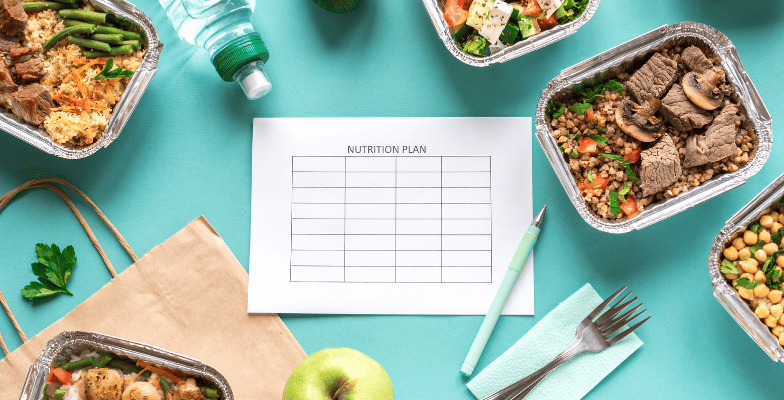
Introduction
What’s The ‘Best Diet’ For Your Clients?
Let me start by saying that the best diet is a subjective concept. A given diet may be very good for Client A but disastrous for Client B. We all are unique, and a good holistic nutrition coach will have the right expertise, knowledge, and skills to help their clients find the right diet for them.
Creating a diet starts by asking the right questions and knowing as much as possible about your client’s needs, wants, goals, abilities, and lifestyle through the help of various forms and questionnaires.
These forms and questionnaires will help you understand a lot about your clients, which include but are not limited to their goals, fitness levels, budget, dietary preferences, usually based on their ethnic background, how much time they can devote to their health and fitness goals, their diet history, past dieting successes/failures, and so forth.
When you acquire the above details and more, you’ll be able to design the best diet for your clients because it will be personalized to them.
Having said that, there are still important healthy guidelines and fundamental dietary principles common to any diet you design for your clients. I strongly feel any diet plan with the following 7 health components can help anyone lose weight/build muscle, and optimize their health most efficiently and effectively.
Let’s discuss them in detail.
Health Components Of A Good Diet Plan
1) Minimize Or Eliminate Sugar
In today’s world, it’s not what you eat but what gets in the way. There are thousands of products in the supermarket, and many are designed to make you fat.
The culprit is Sugar. The chart below provides a few dozen aliases for sugar on the ingredient lists of packxaged foods:
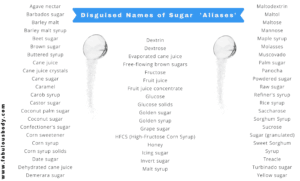
If you find any of these ingredients (especially in the first three items of the ingredient list), as a rule of thumb, most of the calories in that product come from sugar.
Added sugar in foods and refined sugar were nonexistent a few hundred years ago! In the 1700s, the average person consumed 4 lbs of sugar per annum. It increased to 60 lbs per annum in the 1900s.
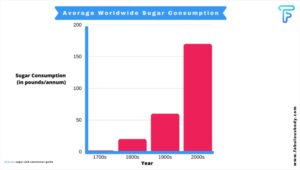
In the 21st century, the average worldwide sugar consumption per annum is a whopping 170 lbs per annum!
In fact, added sugar is present in ~75% of processed foods and beverages in the United States. Sugar is added to pastries, biscuits, ketchup, cured meats, candy, bread, soups, cereals, salad dressings, pasta sauces, flavored yogurts, and so forth.
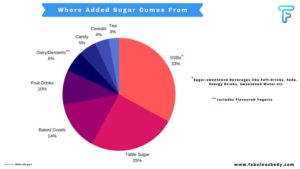
Numerous studies support a strong association between sugar-sweetened beverage (SSB) consumption and obesity. 1https://pubmed.ncbi.nlm.nih.gov/20138901/, 2https://pubmed.ncbi.nlm.nih.gov/22289979, 3https://pubmed.ncbi.nlm.nih.gov/16895873, 4https://pubmed.ncbi.nlm.nih.gov/19056589/, 5https://pubmed.ncbi.nlm.nih.gov/22998338/, 6https://pubmed.ncbi.nlm.nih.gov/22998340/ SSBs account for more than one-third of calories from added sugars. 7https://www.health.harvard.edu/blog/eating-too-much-added-sugar-increases-the-risk-of-dying-with-heart-disease-201402067021 In addition, scores of scientific literature indicate that the consumption of SSBs causes insulin resistance. 8https://pubmed.ncbi.nlm.nih.gov/27001645/, 9https://pubmed.ncbi.nlm.nih.gov/25825943/, 10https://pubmed.ncbi.nlm.nih.gov/19381015/, 11https://pubmed.ncbi.nlm.nih.gov/21677052
Insulin resistance significantly increases the risk of developing type-2 diabetes. And don’t forget that unwanted weight gain (or obesity) is also a risk factor for developing diabetes. 12https://www.ncbi.nlm.nih.gov/pmc/articles/PMC4822166/
In a 2014 study published in the JAMA Internal Medicine, Quanhe Yang et al. concluded that a higher percentage of added sugar calories (17% to 21%) increased CVD mortality risk by 38%. And the relative risk was more than double for those who consumed 21% or more calories from added sugar. 13https://jamanetwork.com/journals/jamainternalmedicine/fullarticle/1819573
A few more studies support the same conclusion. 14https://pubmed.ncbi.nlm.nih.gov/20308626, 15https://pubmed.ncbi.nlm.nih.gov/22412070/ A few randomized controlled trials are consistent with the fact that added sugars are responsible for high blood pressure, which increases the risk of heart disease. 16https://pubmed.ncbi.nlm.nih.gov/21357284/, 17https://pubmed.ncbi.nlm.nih.gov/20497980/
Summary
Sugar is the main culprit, and any diet that minimizes (or eliminates) it will help anyone lose weight and become healthy.
2) Enjoyability
For most, dieting is an event. Once they are off their diets, they usually revert to their old eating patterns. Unfortunately, they also gain all the weight back! You cannot win against a powerful enemy like sugar (or any fast/junk food).

If we mention that we are going to eat pizza for dinner and somehow our 6-year-old son gets a hint, he does not stop reminding us until he eats his first bite. 🙂 I wish he had the same addiction to eating dal.
Unfortunately, that can never be the case, as food companies spend billions and billions of dollars every year in R & D. They employ super-smart people to create food chemicals that alter our brain chemistry and taste buds so that no one can eat just one.
So let’s be smart and include these chemically altered foods in our healthy diet plan. How?
By giving yourself the freedom to eat a percentage of calories from your favorite foods.
Why not allow ~20% of calories from unhealthy foods? 20% of 2000 comes to around 600. Depending on your client’s health and fitness experience and how fast they would like to achieve their goals, it’s a good idea to allow 10 – 30% of their daily calories from their favorite foods.
3) Safeguard Against Cravings And Hunger
Protein has a satiety effect. It gives you that feeling of fullness. For example, when I eat this:
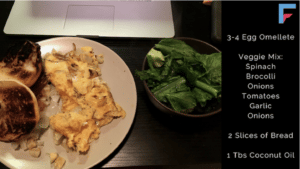
I don’t feel hungry for at least 5 hours!
Also, including healthy fats along with proteins helps, as one gram of fat has nine calories, which slows down gastric emptying. Fats can be your best friend or your worst enemy. It is easy to get confused when talking about fats because some are good, and some are bad.
Good fats found in egg yolk, ghee, coconut oil, walnuts, almonds, avocados, and so forth play a host of important functions in our bodies, make our food tasty and slow down gastric emptying, which when combined with protein, can help alleviate cravings and hunger.
Bad fats like trans fats that are added to virtually every processed food item are completely eliminated from this diet. Vegetable oils that people consider healthy are also a big no as they turn rancid and toxic when used for cooking.
For the past few decades, fats, especially saturated fats, have gotten much attention in the press and have been unfairly demonized. It all started with Ancel Keys and the Seven Countries Study.
Related Article: Saturated Fat: Good Or Bad?
4) Balance Macronutrients
A good diet is almost never lopsided, where one macronutrient is completely missing! There are a few exceptions to this, like a standard ketogenic diet. In SKD, the calories from carbohydrates are limited to only 100 calories or 25 g on any given day!
If you have been on a standard ketogenic diet for many months or more and feel that it works for you, then more power to you! However, for most people, it does not work! Carbohydrates from whole grains, pulses, beans, fruits, and vegetables are a fabulous addition to one’s diet (especially for a vegetarian). And so are proteins and healthy fats.
The best diet for any of your clients (with some exceptions like an SKD) should derive at least 20% calories from each of the macronutrients.
A few macro splits that are commonly used (expressed in percentages)
C: P: F
50 : 25: 25
40 : 30: 30
20 : 30: 50
Essentially, each macronutrient’s percentage can vary between 20 and 50% depending on dietary preferences, selected meals based on ethnic background, etc.
5) Optimal Intake Of Micronutrients
There are 13 vitamins and 17 minerals that are essential for our survival. Billions of chemical reactions that convert food into energy rely on these micronutrients. Therefore, a good diet should contain all essential nutrients. How can you make sure of this?
Here is a snapshot of a sample diet plan with all its core food ingredients:
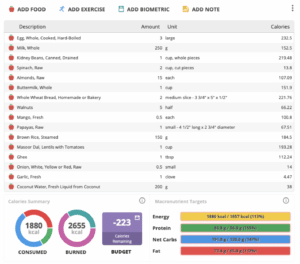
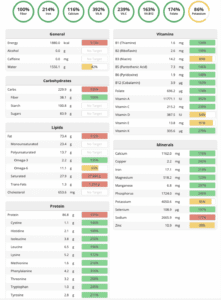
Notice the levels of micronutrients and fiber. Almost everything is above 100% of the recommended dose.
Note: The best way to get vitamin D is through the sun.
6) Optimal Intake Of Special Compounds
Special compounds include fiber, probiotics, and phytonutrients.
Fiber-Soluble & Insoluble
Most experts agree that the average person only gets about half the needed amount of fiber daily. Estimates indicate that most of us are getting no more than 12 g daily, which is severely deficient.
Ideally, women should get about 25 grams a day and men at least 35 to 40 grams a day. Studies show that optimal fiber intake can help lower the risk of heart disease, stroke, and diabetes. It may also help with certain types of cancer, like colorectal cancer.
Related Article: What Is Fiber? Health Benefits, Food Sources And Daily Requirements
Probiotics
Optimizing gut bacteria is the key to good health. Probiotics are good bacteria in your gut, including some yeast that can act as probiotics. They help us digest and absorb our food and help stimulate our immune system. Roughly 70% of our immune system is located within the gut in the form of gut-associated lymphoid tissue [GALT]. 18https://www.ncbi.nlm.nih.gov/pmc/articles/PMC2515351/
There is enough evidence to suggest that gut microbiota modulate neurotransmitters like serotonin, GABA, and even dopamine. The gut is the largest site for serotonin, as gut microbes and gut cells produce it. Literally, 90% of the serotonin in the body is produced in the gut. 19https://faseb.onlinelibrar y.wiley.com/doi/abs/10.1096/fj.14-259598
With so many awesome benefits of probiotics, it makes sense that a good diet includes many foods high in probiotics, like buttermilk, yogurt, kimchi, kanji, pickles, chutney, etc.
Related Article: Probiotics Health Benefits | 9 Probiotics-Rich Foods
Phytonutrients
Phytonutrients are chemicals that plants produce to protect themselves from insects, fungi, bugs, and UV rays. Unlike vitamins and minerals, phytonutrients aren’t essential for keeping us alive. However, they play an important role in optimizing our health.
Therefore, eating various plant-based foods is imperative to ensure a steady supply of phytonutrients. The two major classes of phytonutrients are carotenoids and flavonoids.
Related Article: Phytonutrients Definition | Phytonutrients Foods And Chart
7) Ethnic Background And Cultural Eating Habits
A Gujarati will prefer to eat khandvi, kadhi or dhokla. On the other hand, a south Indian would love to have dosa on the menu, and no matter how much you promote ghee or coconut oil to Italians, they would prefer olive oil as their source of healthy fats.
Sure, once in a while, people like to try different cuisines, but the best diet for anyone is in line with their ethnic background and cultural eating habits.
Conclusion
Now that you know the 7 health components of a good diet plan, you can sit down to design a plan that gets as close as possible to these parameters while still being practical.
You will now have the diet in your hands that can lead you toward meeting your fat loss or muscle-building goals. Good luck!
What do you think about this article? Have any questions? Let me know in the comments below!

Skill-Based Education.
Global Recognition.
Powerful Community Building
Secure a certificate of completion in as little as a day by graduating from one of our free courses.
Get Access to Our Free Courses. No Credit Card Required.

Fabulous Body Membership
Your All-Access Pass to A Fabulous Body & A Rewarding Career
25+ Certificate Courses & Programs, All Included
15 Day Free Trial, 100% Money-Back Guarantee
About Akash Sehrawat
Akash is a creator of 25+ programs and certificate courses in which more than 200,000 students have enrolled both on Udemy and Fabulous Body's native platform. Akash is also an author of three books that can be found on Amazon. His answers on Quora have gathered more than 12 million views in less than a year.







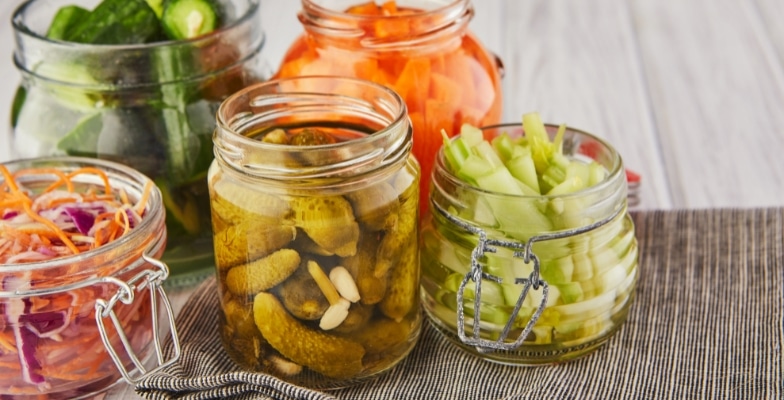

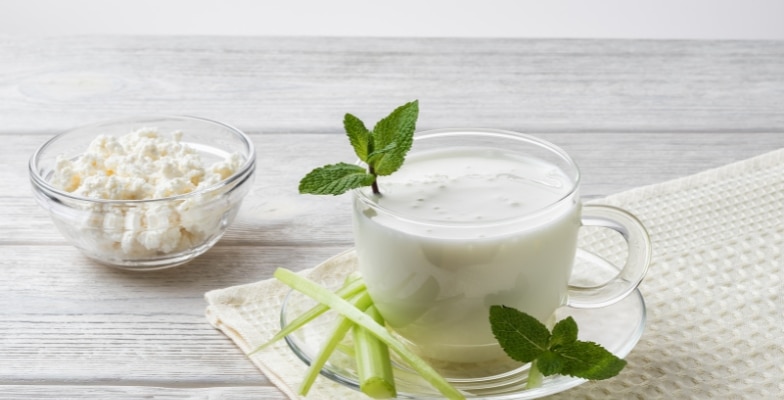

Hello Mr. Akash. I will start with expressing gratitude and immense satisfaction that I have received after studying your Internationally Accredited Diploma Certificate in Nutrition course. I have gained so much knowledge, and understanding of facts in respect to Nutrition. Thank you once again for such a wonderful course.
I have gone through a weight loss journey myself and have reduced 30 kgs in one year. I followed a very good diet plan that I studied and created for myself and it included all of the above points. And through this journey I wanted to empower and help other women out there. So I decided to pursue your course which has given me a good direction.
The healthy eating has become my daily lifestyle now. However, I do have a question – If we are done with our diet plan and we have achieved the goals and following healthy and mindful eating, but sometimes there are special occasions, events, or when we are travelling and we would like try out new cuisine, how should we go about it? We can’t simply avoid certain situations. So basically I am determined not go back to my unhealthy and bad lifestyle but if in certain situation, we feel like eating, how should we go about it? Thank you for taking out time to answer my question.
Hi Madhu,
We are very grateful for your feedback and would like to congratulate you on succeeding in your fat loss journey.
To answer the question, as you rightly said, there are certain situations where we cannot eating food that may not look very healthy.
So go ahead and eat it, don’t worry about losing all of your progress.
Simply add it all your calorie calculator and adjust the rest of your day’s meals accordingly.
These are one-off incidents, a permanent healthy lifestyle will still keep you in a good shape.
Regards,
Kunal,
Team Fabulous Body